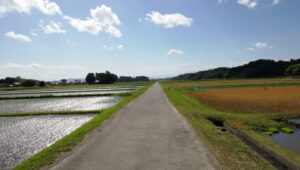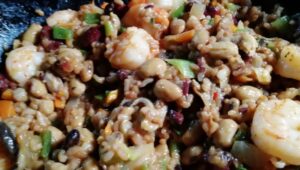The Summer Solstice and the Contrast of Wheat and Rice
Get the Japanese Superfood List
The summer solstice is a time of transition in Japan. The days are at their longest, and the weather is starting to get warmer. In the countryside, you can see a rare sight: a wheat field next to a rice field. The wheat is ready for harvest, and the rice has just begun growing. This contrast is a reminder of the different ways that wheat and rice are grown in Japan.
Wheat is mostly grown for noodles, such as udon, hiyamugi, and somen. It is not as common as rice, which is the staple food of Japan. The reason for this is the climate. Japan has a rainy season in June, when wheat needs to be harvested. This makes it difficult to dry the wheat in the sun.
As I was walking and jogging this morning, my new workout routine combining walking and jogging, I was tuning into the energy of the summer solstice, feeling the sun on my skin and the wind in my hair. I was thinking about the concept of shindofuji. Shindofuji is the idea that our lives are influenced by regional and seasonal factors. Even though we live in a highly technological society, our biology is still affected by the land and climate.
This is why it is important to eat locally and seasonally. When we eat food that is grown in our own region, it is better for our health. It is also better for the environment.
The same principle applies to other activities. We should live locally and live seasonally. This means doing things that are in tune with the natural environment of our region.
The summer solstice is a time to celebrate the transition from spring to summer. It is also a time to think about how we can live in harmony with the natural world.
To learn more about shindofuji, you can read Chapter 5 of my book The Ikigai Diet.
Happy Summer Solstice!
This is the video for this week.

